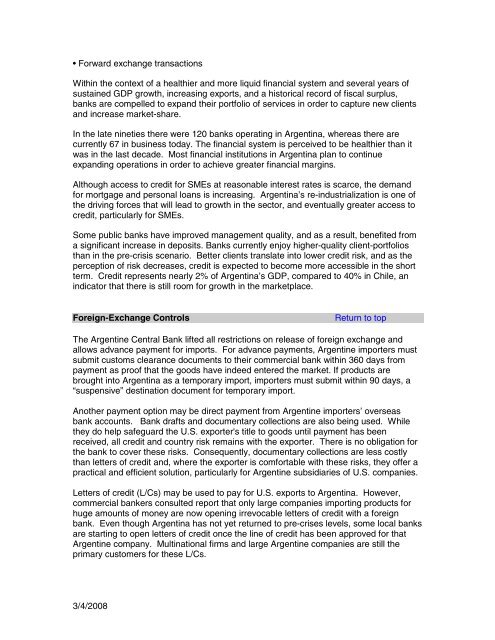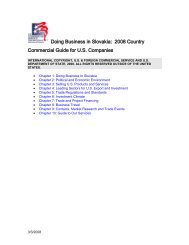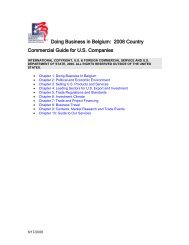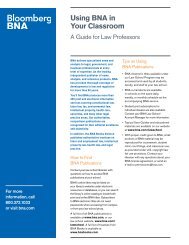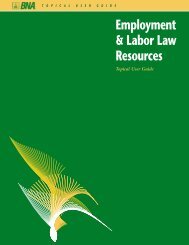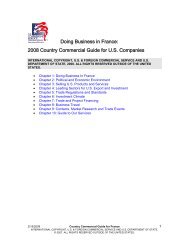Create successful ePaper yourself
Turn your PDF publications into a flip-book with our unique Google optimized e-Paper software.
• Forward exchange transactions<br />
Within the context of a healthier and more liquid financial system and several years of<br />
sustained GDP growth, increasing exports, and a historical record of fiscal surplus,<br />
banks are compelled to expand their portfolio of services in order to capture new clients<br />
and increase market-share.<br />
<strong>In</strong> the late nineties there were 120 banks operating in <strong>Argentina</strong>, whereas there are<br />
currently 67 in business today. The financial system is perceived to be healthier than it<br />
was in the last decade. Most financial institutions in <strong>Argentina</strong> plan to continue<br />
expanding operations in order to achieve greater financial margins.<br />
Although access to credit for SMEs at reasonable interest rates is scarce, the demand<br />
for mortgage and personal loans is increasing. <strong>Argentina</strong>’s re-industrialization is one of<br />
the driving forces that will lead to growth in the sector, and eventually greater access to<br />
credit, particularly for SMEs.<br />
Some public banks have improved management quality, and as a result, benefited from<br />
a significant increase in deposits. Banks currently enjoy higher-quality client-portfolios<br />
than in the pre-crisis scenario. Better clients translate into lower credit risk, and as the<br />
perception of risk decreases, credit is expected to become more accessible in the short<br />
term. Credit represents nearly 2% of <strong>Argentina</strong>’s GDP, compared to 40% in Chile, an<br />
indicator that there is still room for growth in the marketplace.<br />
Foreign-Exchange Controls Return to top<br />
The Argentine Central Bank lifted all restrictions on release of foreign exchange and<br />
allows advance payment for imports. For advance payments, Argentine importers must<br />
submit customs clearance documents to their commercial bank within 360 days from<br />
payment as proof that the goods have indeed entered the market. If products are<br />
brought into <strong>Argentina</strong> as a temporary import, importers must submit within 90 days, a<br />
“suspensive” destination document for temporary import.<br />
Another payment option may be direct payment from Argentine importers’ overseas<br />
bank accounts. Bank drafts and documentary collections are also being used. While<br />
they do help safeguard the U.S. exporter's title to goods until payment has been<br />
received, all credit and country risk remains with the exporter. There is no obligation for<br />
the bank to cover these risks. Consequently, documentary collections are less costly<br />
than letters of credit and, where the exporter is comfortable with these risks, they offer a<br />
practical and efficient solution, particularly for Argentine subsidiaries of U.S. companies.<br />
Letters of credit (L/Cs) may be used to pay for U.S. exports to <strong>Argentina</strong>. However,<br />
commercial bankers consulted report that only large companies importing products for<br />
huge amounts of money are now opening irrevocable letters of credit with a foreign<br />
bank. Even though <strong>Argentina</strong> has not yet returned to pre-crises levels, some local banks<br />
are starting to open letters of credit once the line of credit has been approved for that<br />
Argentine company. Multinational firms and large Argentine companies are still the<br />
primary customers for these L/Cs.<br />
3/4/2008


